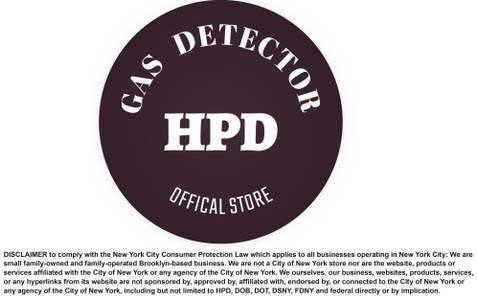Local Law 157 – Natural Gas Alarms
Enhancing Safety with Mandatory Natural Gas Detectors
Local Law 157 of 2016 significantly amended the New York City Housing Maintenance Code and Building Code, mandating the installation of natural gas detectors in residential buildings. This legislation aims to enhance the safety and well-being of residents by ensuring early detection of natural gas leaks. The Department of Buildings (DOB) has recently issued updates to these regulations, which went into effect on January 1, 2024. Here’s a detailed look at the new standards for installation and location of natural gas alarms.
New Standards for Installation and Location of Natural Gas Alarms
Adoption of National Standard
In alignment with Local Law 157 of 2016, the Department of Buildings has adopted the 2023 edition of the National Fire Protection Association (NFPA) 715 Standard for the Installation of Fuel Gases Detection and Warning Equipment. This ensures a standardized approach to the installation and location of natural gas alarms across the city.
Installation Requirements
Natural gas alarms must be installed in the following types of buildings as defined in the Housing Maintenance Code:
- Private Dwellings
- Class A Multiple Dwellings
- Class B Multiple Dwellings
Exception: The installation requirements do not apply to buildings without gas piping or gas service.
Deadlines for Installation
- Private Dwellings: One or more natural gas alarms must be installed in each dwelling unit by May 1, 2025.
- Class A Multiple Dwellings: One or more natural gas alarms must be installed in each dwelling unit by May 1, 2025.
- Class B Multiple Dwellings: By May 1, 2025, Class B multiple dwellings must be protected by either:
- One or more natural gas alarms installed in each dwelling unit, or
- A line-operated zoned natural gas detecting system, designed in accordance with NFPA 715-2023 by a registered design professional, installed in all public corridors and public spaces.
Specific Requirements for Alarms
-
Location Relative to Appliances: Where a fuel-gas-burning appliance is installed, the gas alarm must be in the same room, positioned at least 3 feet but not more than 10 feet from the appliance, measured horizontally.
-
Placement: Alarms must be installed on either the ceiling or a wall. Wall installations must be no more than 12 inches from the ceiling.
Exception: If the manufacturer’s instructions or NFPA 715-2023 require a different location, installations must comply with those guidelines.
-
Labeling: Alarms must be labeled with the manufacturer’s name.
-
Certification: Alarms must be listed and labeled with either UL 1484 or UL 2075, as applicable.
-
Maintenance: Alarms must be kept in good working order.
Installer Qualifications
Natural gas alarms must be installed by a New York City Licensed electrical contractor, who must obtain all required permits.
Exception: Natural gas alarms powered by battery or plug-in AC receptacle may be installed by the building owner, building maintenance personnel, or the dwelling unit occupant.
§3616-06 NFPA 715 Amendment
The 2023 edition of NFPA 715 has been amended to include comprehensive guidelines on the installation and location of natural gas alarms. These amendments ensure that all installations are performed to the highest safety standards, providing reliable detection and warning of potential natural gas hazards.
Conclusion
Local Law 157 is a critical measure for improving residential safety in New York City. The mandatory installation of natural gas alarms, guided by the latest NFPA standards, provides an essential safeguard against the dangers of gas leaks. Compliance with these updated regulations by May 1, 2025, is imperative for all affected property owners to ensure the safety of their occupants. For further details or specific installation requirements, residents and property owners should refer to the full text of the law and the latest DOB guidelines.
